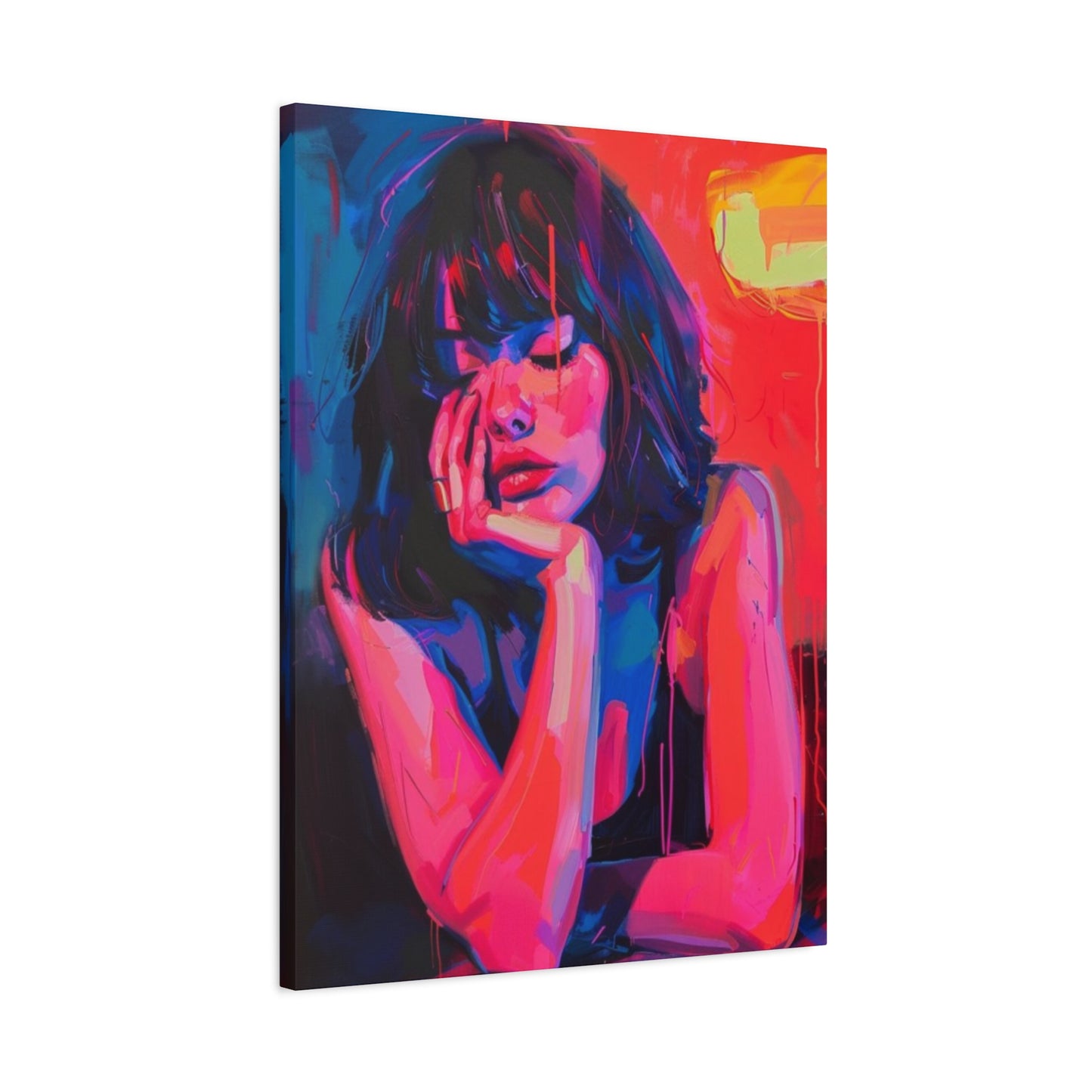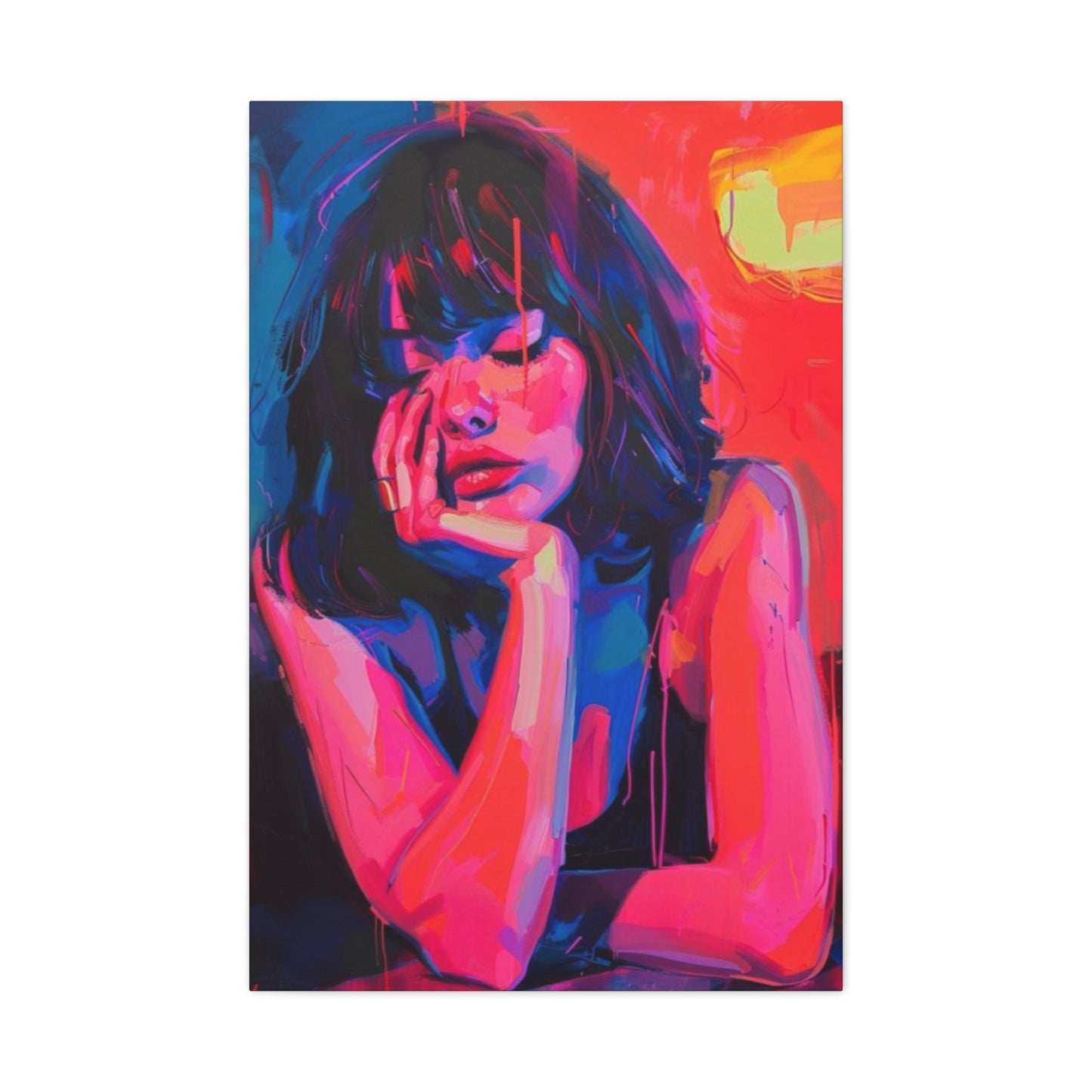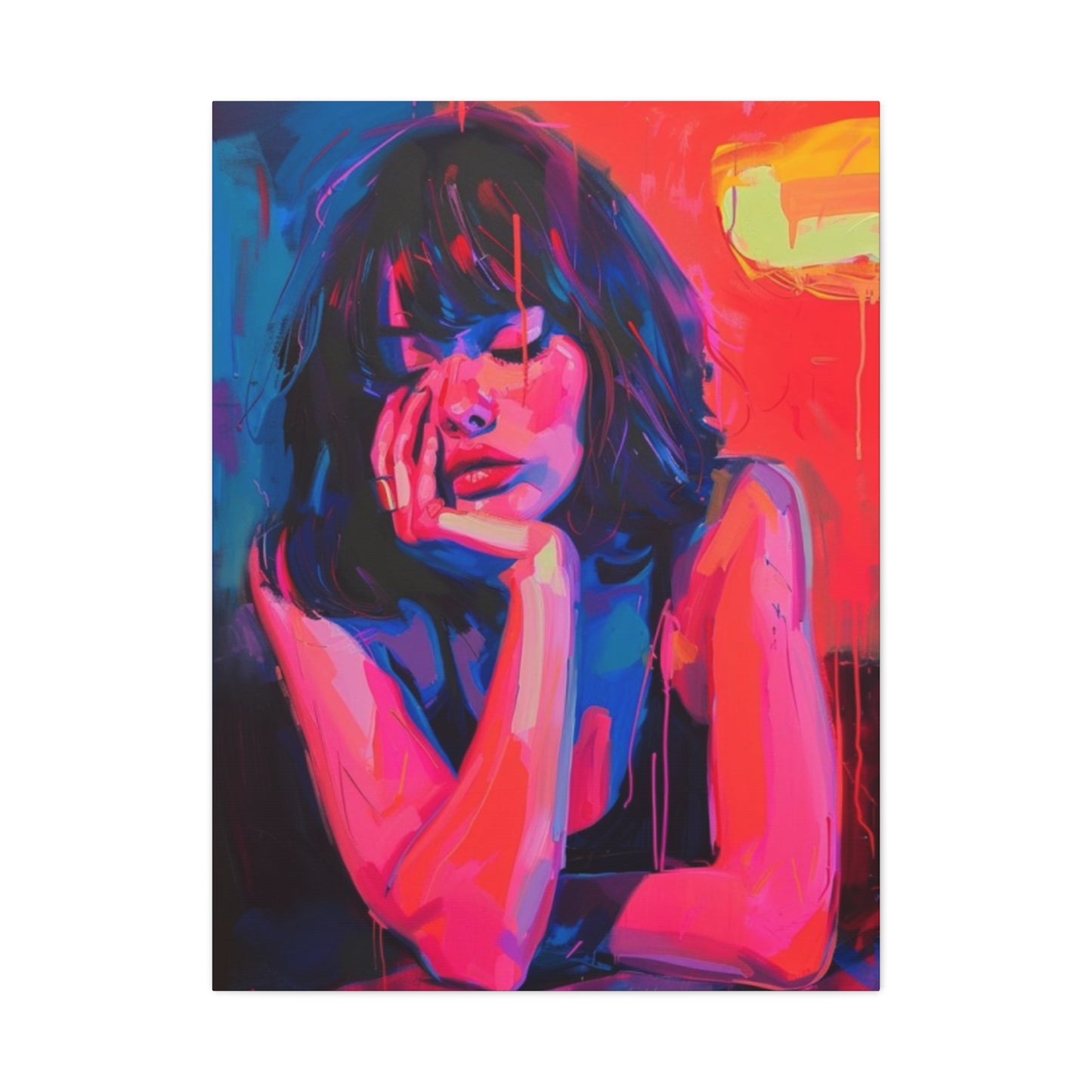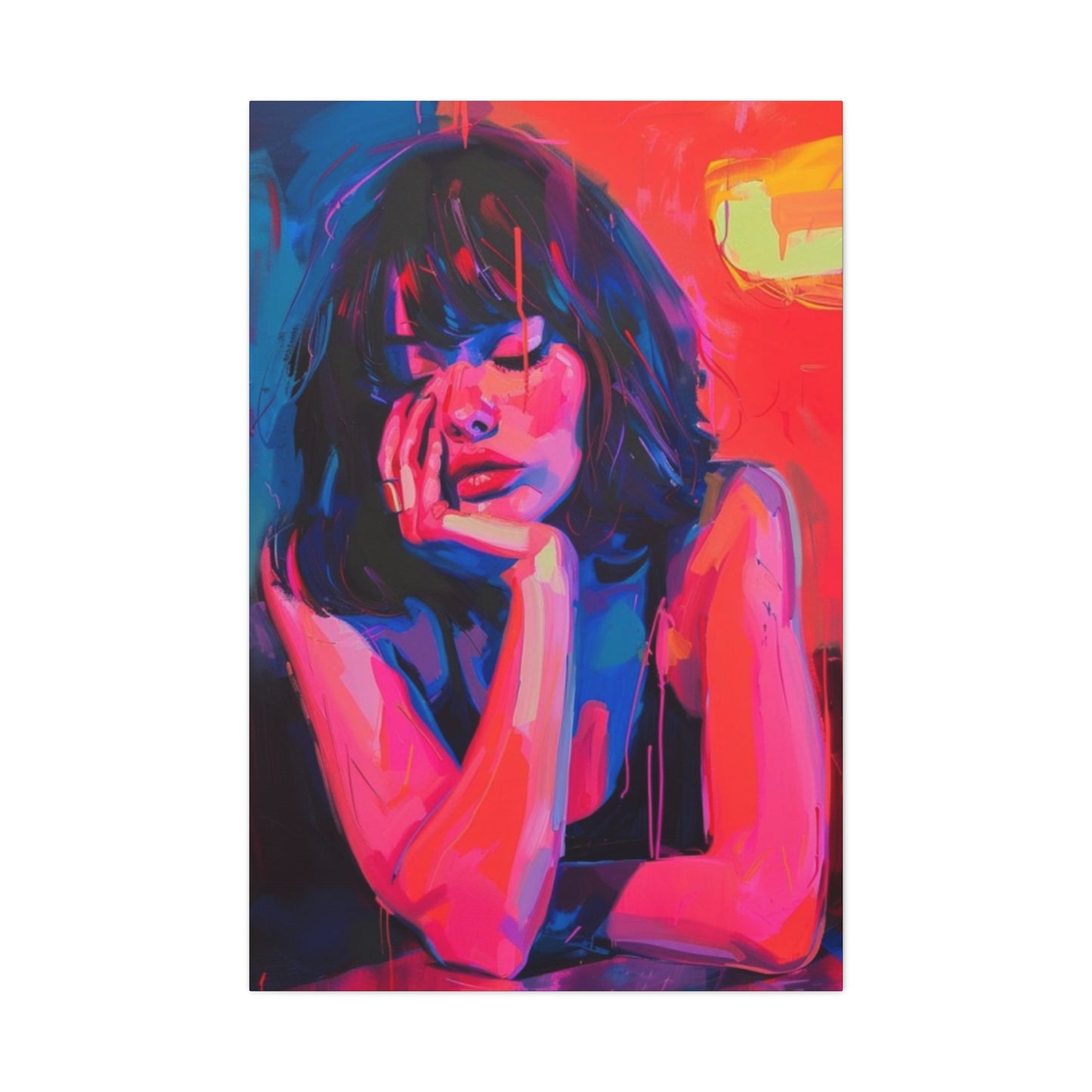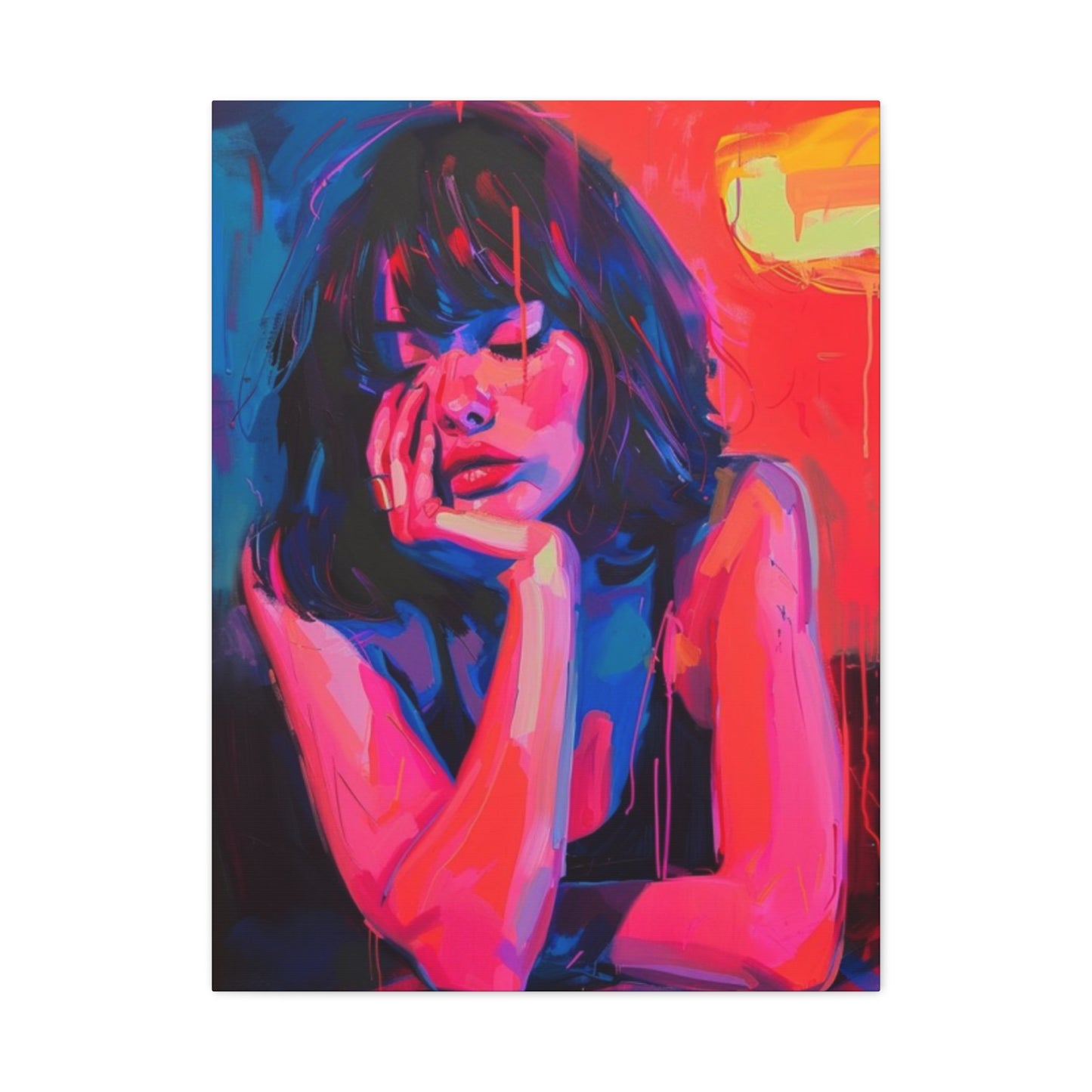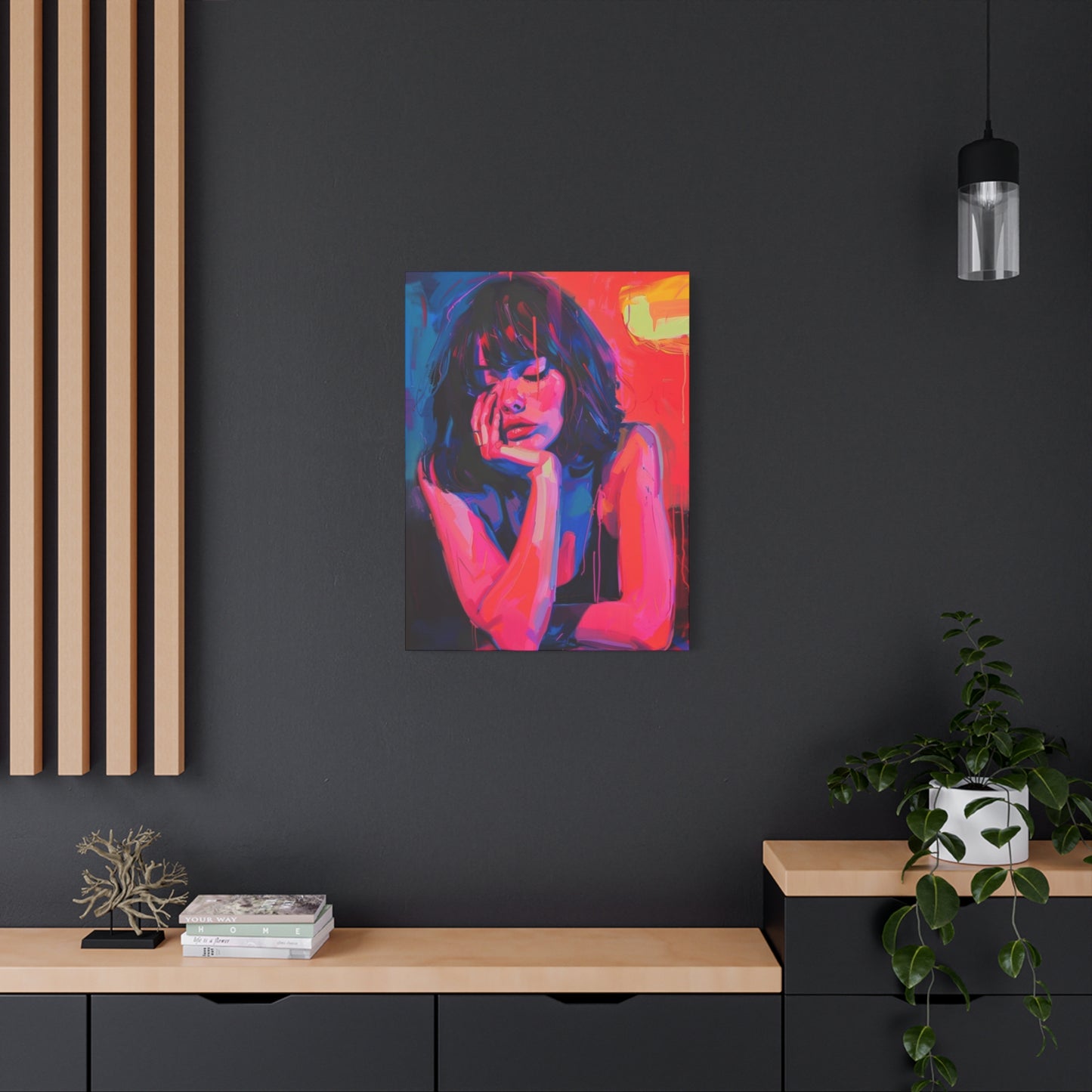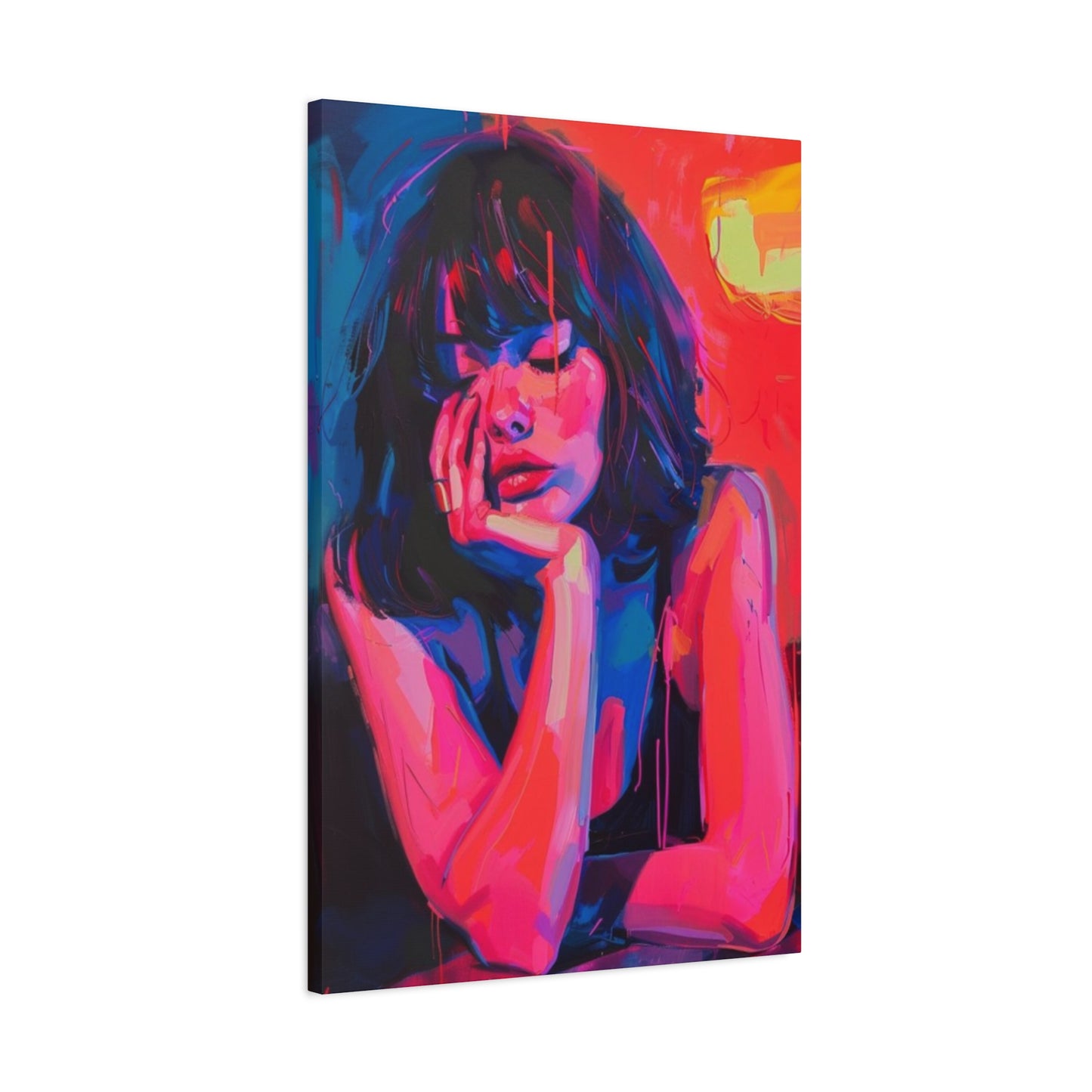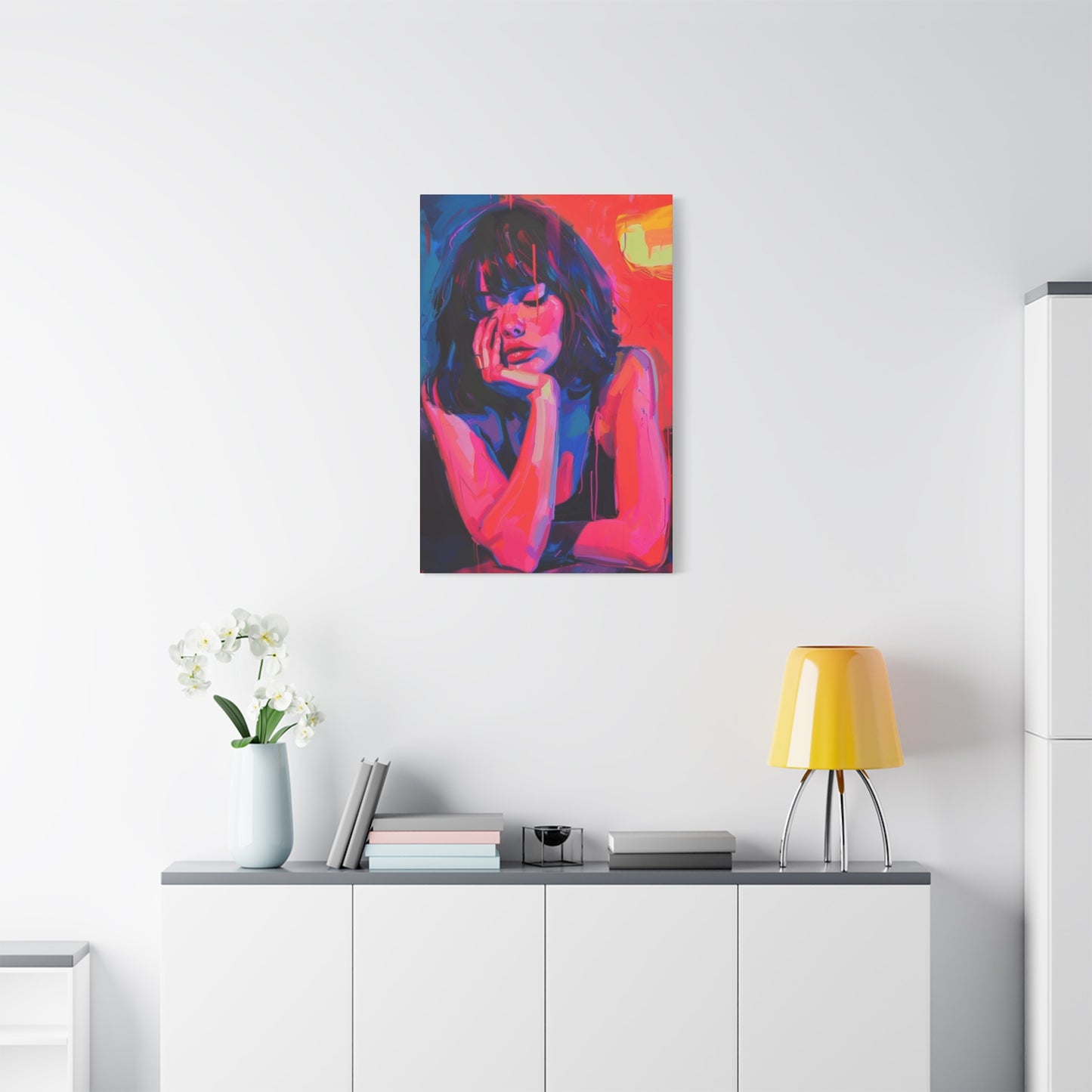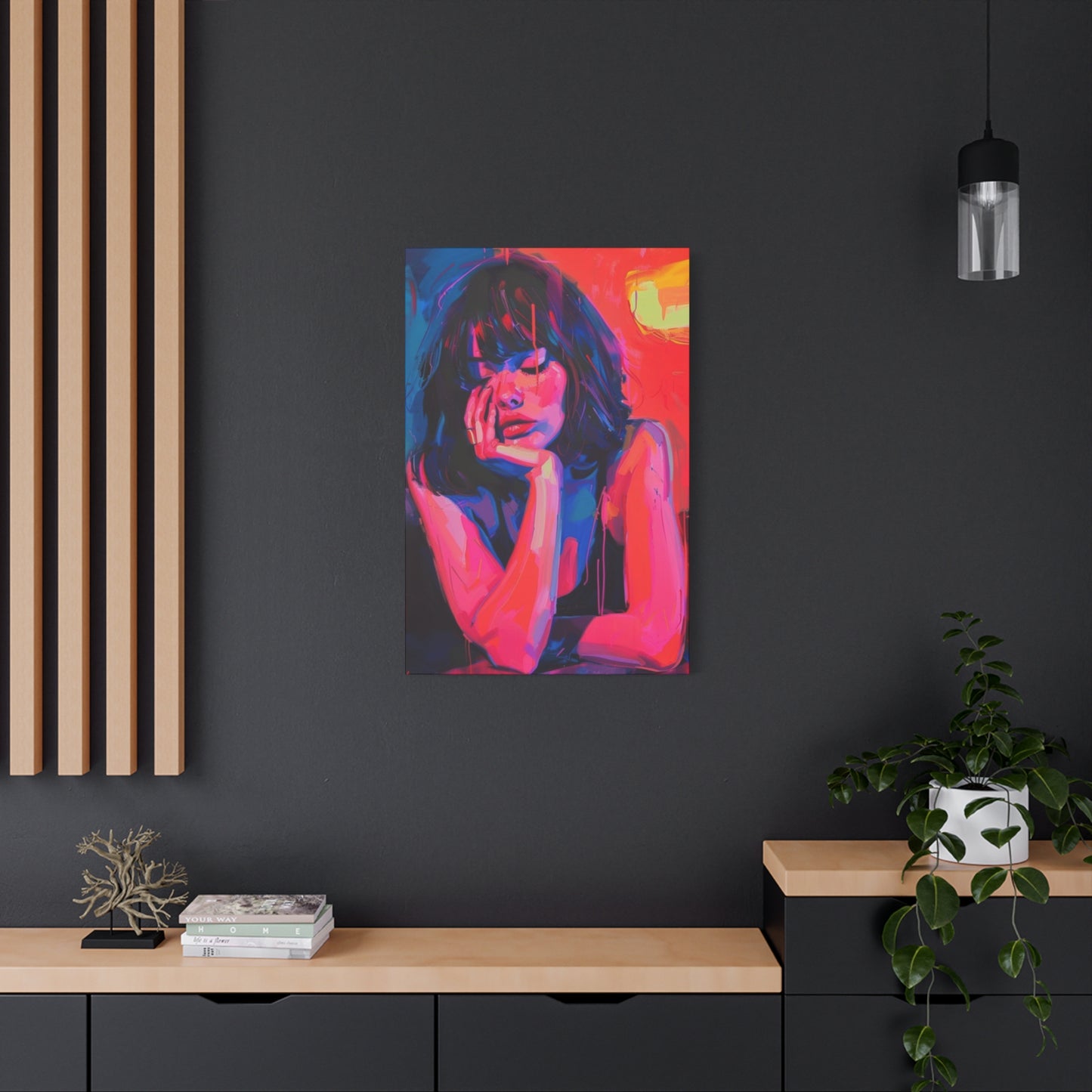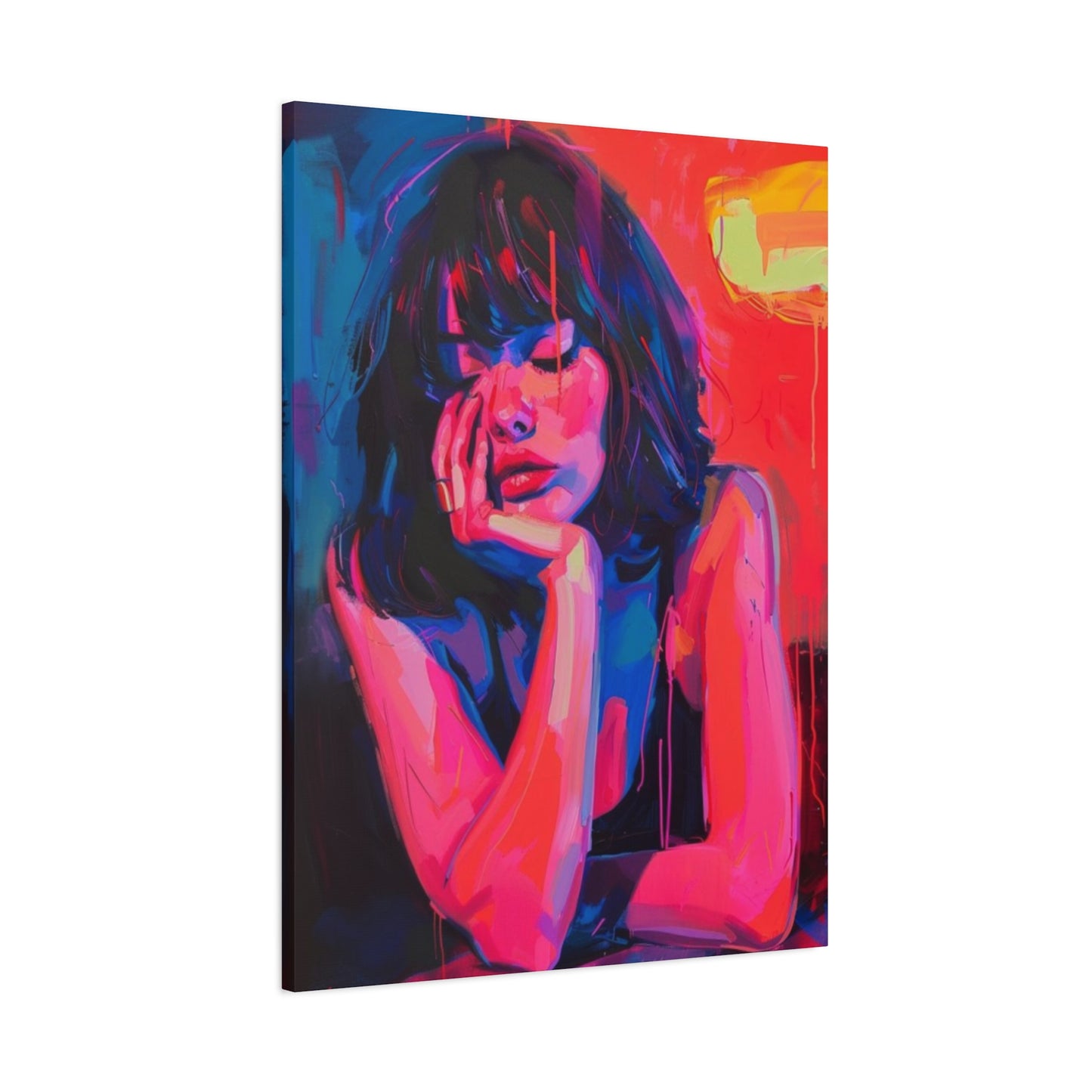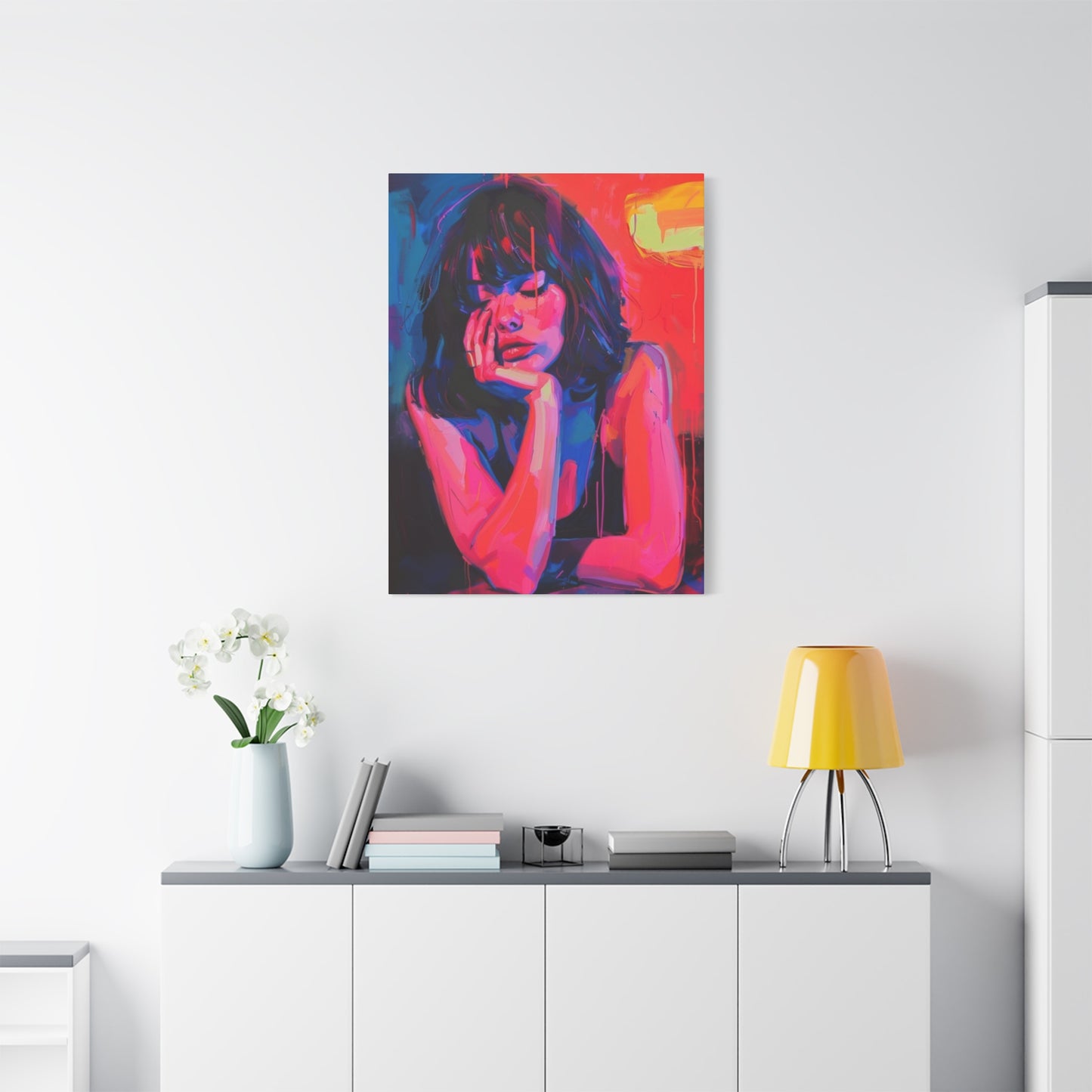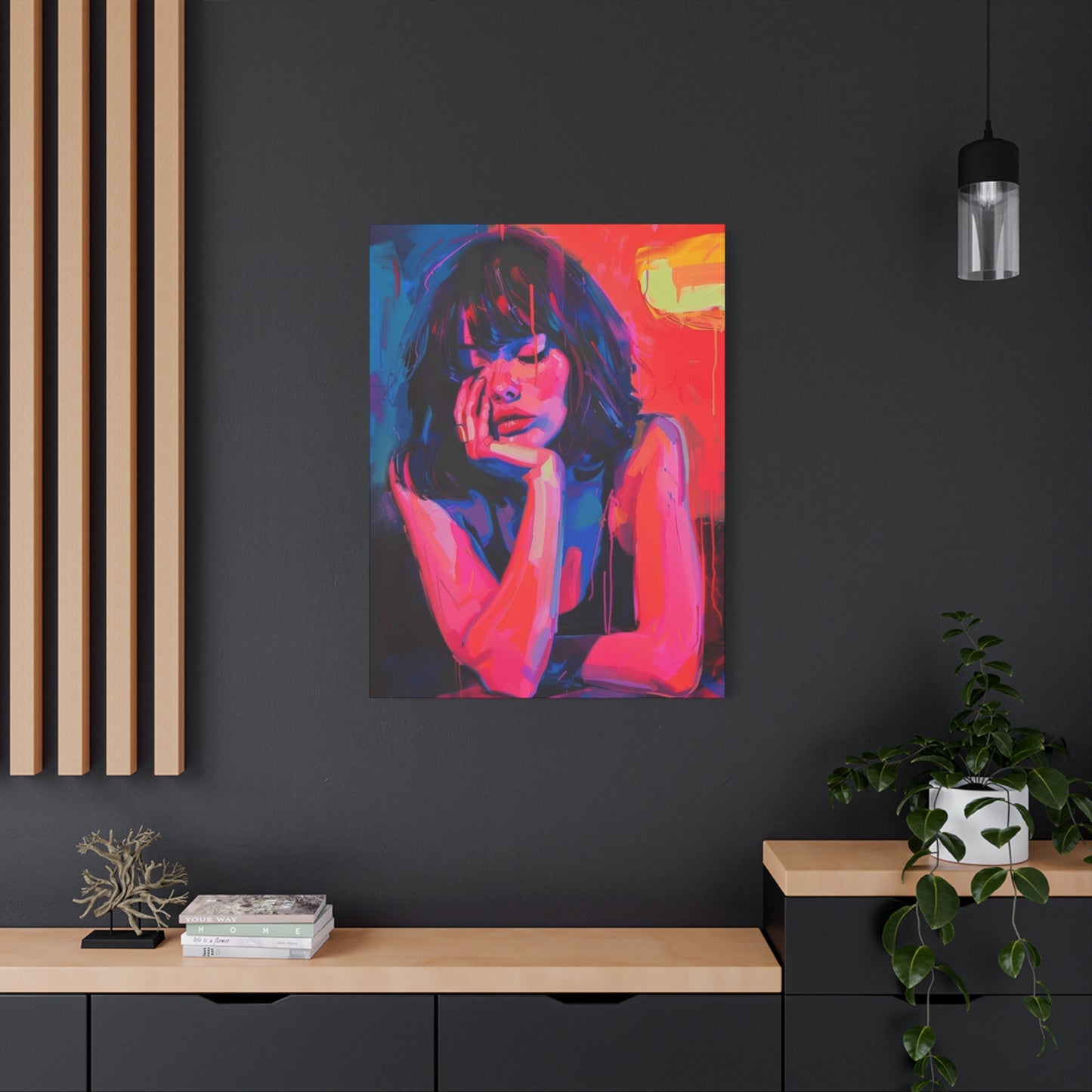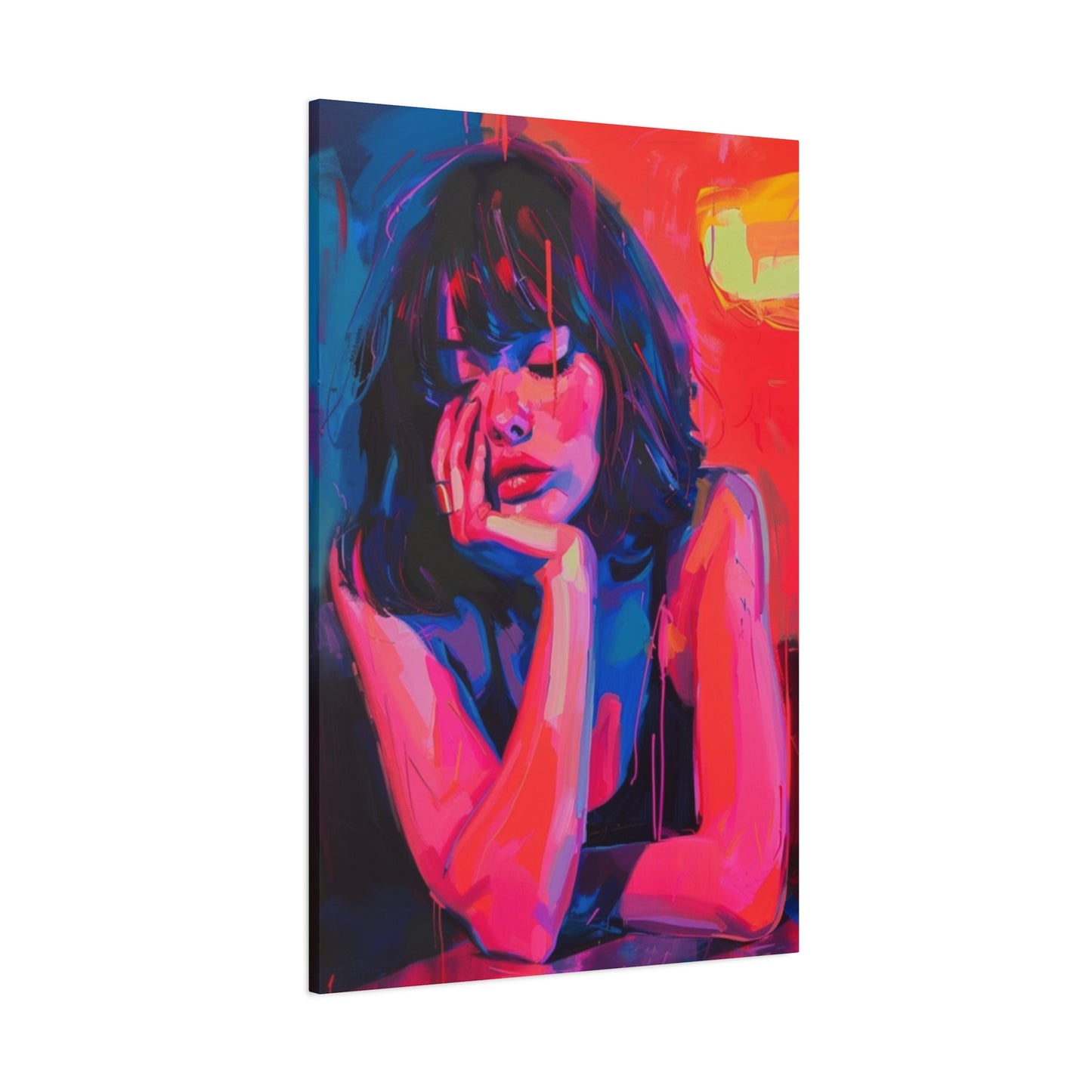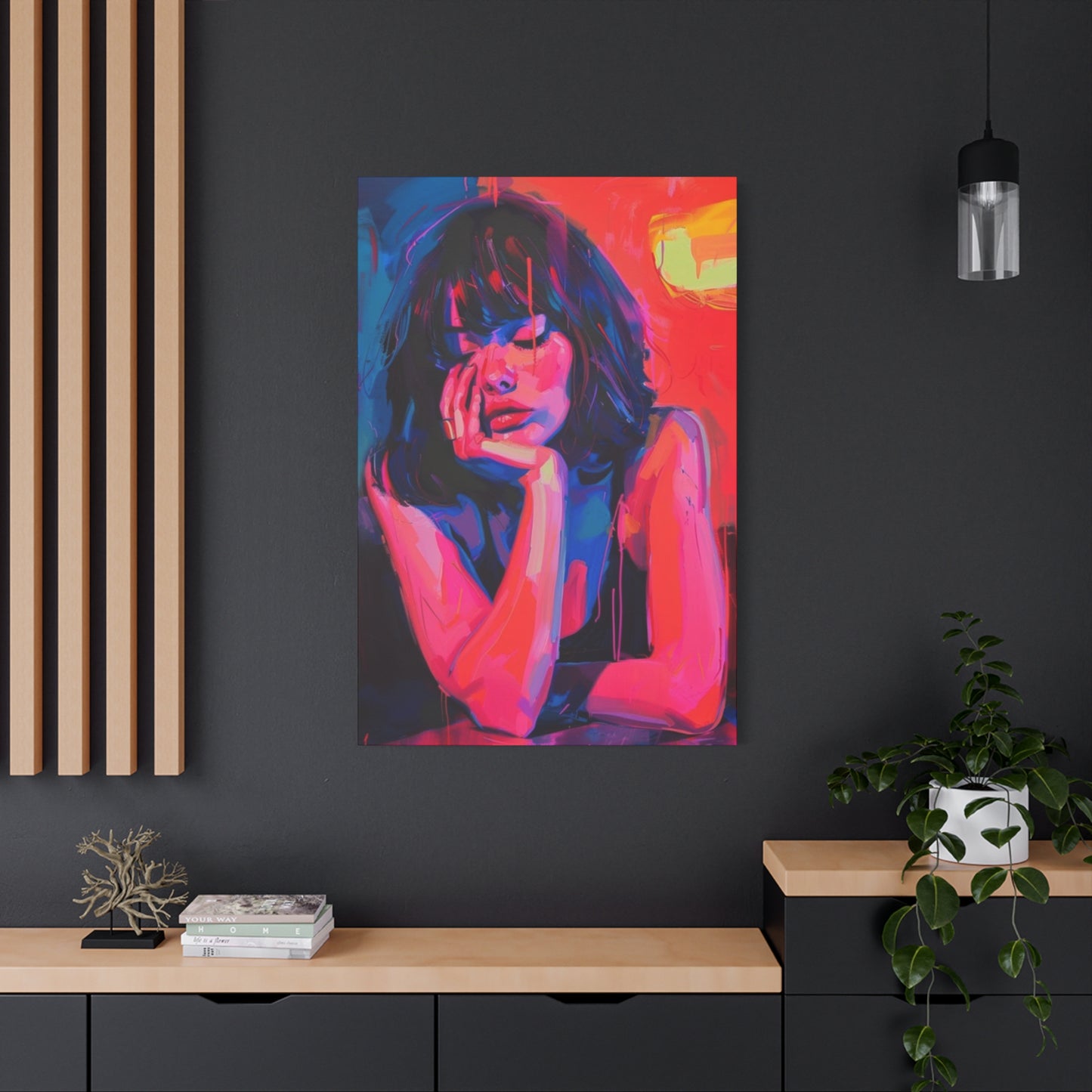Modern Women Abstract Wall Art Collection for Contemporary Homes
The world of contemporary artistic expression has witnessed a remarkable renaissance in the portrayal of feminine themes through abstract mediums. This revolutionary movement has transformed how we perceive and appreciate the representation of women in artistic compositions, moving beyond traditional figurative approaches to embrace bold, expressive, and emotionally resonant abstract interpretations. The evolution of this artistic genre represents a significant departure from conventional portraiture, offering viewers an opportunity to engage with feminine themes through innovative visual languages that speak to modern sensibilities and aesthetic preferences.
Contemporary artists have embraced abstract methodologies to explore the complexity and depth of feminine identity, creating works that transcend literal representation while maintaining powerful emotional connections with viewers. These artistic creations utilize color, form, texture, and composition to convey the essence of feminine energy, strength, beauty, and independence in ways that traditional representational art often cannot achieve. The abstract approach allows artists to distill the fundamental qualities of feminine expression into pure visual elements, creating compositions that resonate on both intellectual and emotional levels.
The growing popularity of abstract feminine themes in contemporary art reflects broader cultural shifts toward recognizing and celebrating diverse expressions of womanhood. Artists working in this genre draw inspiration from various sources, including personal experiences, social movements, historical contexts, and cultural traditions, synthesizing these influences into compelling visual narratives that speak to contemporary audiences. This artistic movement has gained significant momentum in recent years, as collectors and art enthusiasts increasingly seek works that combine aesthetic beauty with meaningful content and cultural relevance.
The technical approaches employed in creating abstract feminine artworks vary considerably, ranging from bold gestural expressions to subtle tonal variations, from geometric interpretations to organic flowing forms. Artists utilize various mediums, including acrylic paints, oils, mixed media, and digital technologies, to achieve their desired visual effects. The diversity of techniques and approaches within this genre ensures that each artwork maintains its unique character while contributing to the broader conversation about feminine representation in contemporary art.
Revolutionary Approaches to Canvas Expression Through Abstract Feminine Themes
The canvas has become a revolutionary platform for expressing complex themes related to feminine identity through abstract visual languages. Contemporary artists working in this medium have developed sophisticated approaches to translating emotional, psychological, and social aspects of women's experiences into compelling visual compositions. These artistic explorations utilize the fundamental elements of abstract art including color relationships, compositional structures, textural variations, and spatial dynamics to create works that communicate on multiple levels simultaneously.
Modern canvas works featuring abstract feminine themes often incorporate symbolic elements that reference various aspects of women's experiences throughout history and in contemporary society. Artists might employ flowing organic forms to suggest natural cycles, bold geometric structures to represent strength and determination, or subtle color transitions to convey emotional complexity. These symbolic elements are integrated seamlessly into abstract compositions, allowing viewers to discover multiple layers of meaning through extended contemplation and engagement with the artworks.
The scale and format of canvas works play crucial roles in determining the impact and effectiveness of abstract feminine themes. Large-scale compositions can create immersive experiences that envelop viewers in their visual narratives, while smaller intimate works invite closer examination and personal reflection. Artists carefully consider these factors when developing their compositions, ensuring that the physical characteristics of their works support and enhance the conceptual content they wish to communicate.
Color psychology plays a fundamental role in how abstract feminine themes are expressed on canvas. Artists working in this genre often develop sophisticated color palettes that reference both traditional associations with femininity and contemporary interpretations of gender identity. These color choices extend beyond simple stereotypical associations, exploring complex emotional territories through unexpected combinations and innovative applications of pigment and texture. The resulting works challenge viewers' preconceptions while creating new visual vocabularies for discussing feminine themes in art.
The preparation and execution processes involved in creating abstract feminine canvas works require significant technical skill and conceptual clarity. Artists must balance spontaneous expressive gestures with carefully planned compositional elements, ensuring that their works maintain visual coherence while conveying their intended messages. This balance between control and freedom reflects broader themes within feminine experience, creating meta-narratives that operate on multiple levels within individual artworks.
Contemporary Portraits Reimagined Through Abstract Visual Languages
The traditional concept of portraiture has undergone radical transformation through the application of abstract visual languages to contemporary feminine themes. Modern artists have moved beyond literal representation to explore the essential characteristics of feminine identity through innovative compositional approaches that prioritize emotional authenticity over photographic accuracy. This evolution represents a fundamental shift in how portraiture functions as an artistic medium, expanding its capacity to communicate complex psychological and social concepts.
Abstract approaches to contemporary feminine portraiture often focus on capturing the essence of personality, emotion, and individual character rather than external physical appearance. Artists achieve this through careful manipulation of color relationships, textural variations, compositional structures, and spatial dynamics that work together to create compelling visual representations of inner life and personal identity. These works invite viewers to engage with portraiture on deeper levels, encouraging contemplation and personal interpretation rather than passive observation.
The democratization of portraiture through abstract methodologies has opened new possibilities for representing diverse experiences of womanhood. Artists can explore themes related to cultural identity, social position, personal history, and future aspirations without being constrained by the limitations of traditional representational techniques. This freedom allows for more inclusive and expansive approaches to feminine portraiture that reflect the complexity and diversity of contemporary women's experiences.
Technical innovations in contemporary portrait creation have enabled artists to experiment with unconventional materials, application techniques, and compositional approaches. Digital technologies have expanded the possibilities for creating abstract portraits, while traditional mediums continue to offer unique opportunities for expressive mark-making and textural exploration. The combination of traditional and contemporary techniques has resulted in hybrid approaches that reflect the complex nature of modern artistic practice.
The reception and interpretation of abstract contemporary portraits require active participation from viewers, who must engage with these works through personal and cultural frameworks of understanding. This participatory aspect of abstract portraiture creates opportunities for meaningful dialogue between artists and audiences, fostering connections that transcend simple aesthetic appreciation to include deeper considerations of identity, representation, and cultural meaning.
Decorative Elements That Transform Living Environments
The integration of abstract feminine artworks into residential environments has revolutionized how people approach decorating their living quarters. These artistic pieces function as more than mere decorative accessories, serving as focal points that define the character and atmosphere of rooms while reflecting the personal tastes and values of their owners. The transformative power of well-chosen abstract feminine artwork extends throughout living environments, creating cohesive aesthetic experiences that enhance daily life.
Contemporary homeowners increasingly recognize the value of incorporating meaningful artistic elements into their living environments rather than relying solely on mass-produced decorative items. Abstract feminine artworks offer unique opportunities to personalize residential settings while maintaining sophisticated aesthetic standards. These works can serve various functional roles within home environments, from creating visual anchor points in large rooms to adding intimate character to smaller personal areas.
The psychological impact of abstract feminine artworks in residential settings extends beyond simple aesthetic pleasure to include emotional and intellectual stimulation. Living with thoughtfully chosen artistic works can enhance creativity, promote contemplation, and provide ongoing sources of inspiration in daily life. The abstract nature of these works ensures that they continue to reveal new aspects and meanings over time, maintaining their relevance and impact through extended viewing and interaction.
Color coordination between abstract feminine artworks and existing residential elements requires careful consideration of both aesthetic harmony and personal preference. Successful integration depends on understanding how different color relationships function within specific lighting conditions and architectural contexts. Artists and collectors often collaborate with designers to ensure that artistic selections complement and enhance existing environmental elements while maintaining their independent artistic integrity.
The placement and presentation of abstract feminine artworks within residential environments significantly influence their visual impact and effectiveness. Proper lighting, appropriate framing, and strategic positioning can dramatically enhance the viewing experience while ensuring that artworks receive adequate attention without overwhelming other environmental elements. These practical considerations play crucial roles in maximizing the transformative potential of artistic investments.
Print Technologies Revolutionizing Artistic Accessibility
The development of advanced printing technologies has democratized access to abstract feminine artworks, allowing broader audiences to engage with sophisticated artistic content at various price points and quality levels. Modern printing techniques can reproduce the subtle color variations, textural qualities, and compositional complexities of original abstract works with remarkable fidelity, making high-quality artistic content accessible to collectors with diverse budgets and preferences.
Digital reproduction technologies have evolved to capture increasingly sophisticated aspects of original artworks, including surface textures, color depth, and subtle tonal variations that were previously impossible to reproduce accurately. These technological advances have expanded the market for abstract feminine art prints while maintaining quality standards that satisfy both artists and collectors. The availability of high-quality prints has also enabled artists to reach wider audiences with their work, expanding the cultural impact of their artistic contributions.
The economics of art print production have created new opportunities for both established and emerging artists working with abstract feminine themes. Limited edition prints allow artists to generate ongoing income from successful compositions while maintaining the exclusivity and collectible value that collectors seek. This economic model supports continued artistic development while making quality artworks accessible to broader audiences who might not otherwise engage with contemporary art markets.
Customization options available through modern printing technologies enable collectors to tailor artworks to their specific preferences and environmental requirements. Options might include size modifications, color adjustments, substrate selections, and finishing treatments that enhance the final presentation of printed works. These customization capabilities ensure that printed artworks can be successfully integrated into diverse residential and commercial environments.
The environmental considerations associated with art print production have led to the development of sustainable printing practices that minimize ecological impact while maintaining quality standards. Eco-friendly inks, recycled substrates, and energy-efficient production processes reflect growing awareness of environmental responsibility within the art industry. These sustainable approaches appeal to environmentally conscious collectors while supporting broader efforts to reduce the ecological footprint of artistic production.
Modernist Principles Applied to Feminine Artistic Expression
The application of modernist aesthetic principles to feminine artistic themes has created a distinctive genre that combines formal innovation with meaningful content. This synthesis reflects the evolution of modernist ideology to embrace diverse cultural perspectives and identity-based themes that were historically marginalized within mainstream artistic discourse. Contemporary artists working in this tradition continue to push boundaries while honoring the fundamental principles of modernist practice.
Modernist emphasis on formal innovation finds natural expression in abstract approaches to feminine themes, where artists can explore the relationship between form and content without the constraints of traditional representational requirements. This freedom allows for experimental approaches to composition, color, texture, and spatial organization that serve both aesthetic and conceptual purposes. The resulting works demonstrate how modernist principles can be applied to contemporary social and cultural concerns.
The democratizing impulses within modernist ideology align naturally with efforts to expand representation of feminine themes in contemporary art. Modernist rejection of hierarchical artistic traditions creates opportunities for exploring alternative perspectives and experiences that challenge established cultural norms. This alignment has supported the development of diverse artistic voices within the abstract feminine art movement, contributing to its continued growth and cultural relevance.
Technical experimentation characteristic of modernist practice appears in contemporary abstract feminine works through innovative material applications, unconventional compositional approaches, and hybrid media techniques. Artists working in this tradition continue to push the boundaries of what is possible within their chosen mediums while maintaining connection to modernist principles of formal innovation and cultural engagement. These experimental approaches contribute to the ongoing evolution of abstract artistic languages.
The international character of modernist ideology has facilitated cross-cultural exchange and collaboration within the abstract feminine art movement. Artists from diverse cultural backgrounds contribute unique perspectives and techniques to this genre, enriching its visual vocabulary and expanding its cultural resonance. This global dimension ensures that abstract feminine art continues to evolve and adapt to changing cultural contexts and artistic influences.
Bold Artistic Statements in Contemporary Creative Expression
Contemporary artists working with abstract feminine themes have developed increasingly bold approaches to creative expression that challenge conventional artistic boundaries and cultural expectations. These bold statements often address complex social, political, and personal issues through sophisticated visual languages that engage viewers on multiple levels simultaneously. The courage required to make such statements reflects the maturity and confidence of the contemporary abstract art movement.
Bold artistic expression in abstract feminine art often involves the use of dramatic scale, intense color relationships, unconventional materials, or provocative compositional approaches that demand attention and consideration from viewers. These works function as visual manifestos that articulate specific positions on issues related to gender, identity, social justice, and cultural representation. The effectiveness of these bold statements depends on artists' abilities to balance conceptual clarity with aesthetic sophistication.
The reception of bold artistic statements varies considerably depending on cultural context, audience composition, and presentation circumstances. Works that might be considered provocative in some settings may be readily accepted in others, highlighting the importance of understanding audience expectations and cultural norms when developing and presenting challenging artistic content. This variability creates opportunities for meaningful dialogue about the role of art in addressing contemporary social issues.
Commercial considerations often influence how bold artistic statements are developed and presented within contemporary art markets. Artists must balance their desire for authentic expression with practical concerns about marketability and collector acceptance. This tension can lead to innovative approaches that maintain artistic integrity while remaining accessible to diverse audiences. The most successful bold artistic statements often achieve this balance through sophisticated formal strategies that support their conceptual content.
The educational value of bold artistic statements extends beyond their immediate aesthetic impact to include their capacity to stimulate discussion, promote critical thinking, and encourage personal reflection. These works can serve as catalysts for broader conversations about contemporary cultural issues while providing specific examples of how artistic expression can engage with complex social themes. This educational dimension contributes to the long-term cultural value and significance of bold abstract feminine artworks.
Stylish Approaches to Modern Artistic Presentation
Contemporary presentation of abstract feminine artworks has evolved to embrace diverse stylistic approaches that enhance viewing experiences while respecting the integrity of individual works. Modern presentation strategies consider factors including lighting design, spatial relationships, contextual elements, and audience engagement to create comprehensive aesthetic experiences that maximize the impact of artistic content. These sophisticated approaches reflect growing understanding of how environmental factors influence artistic reception.
Stylish presentation extends beyond simple display considerations to include curatorial strategies that create meaningful connections between related artworks and broader cultural themes. Thoughtful grouping of works can reveal new aspects of individual pieces while contributing to larger narratives about contemporary artistic development. These curatorial approaches require deep understanding of both individual artworks and broader cultural contexts in which they operate.
The integration of technology into artistic presentation has created new possibilities for enhancing viewer engagement with abstract feminine artworks. Digital displays, interactive elements, augmented reality applications, and multimedia presentations can provide additional layers of information and interpretation without detracting from the primary aesthetic experience. These technological enhancements must be carefully balanced to support rather than overwhelm artistic content.
Commercial gallery presentation of abstract feminine artworks often emphasizes sophisticated aesthetic environments that complement and enhance individual works while maintaining professional standards expected by serious collectors. These presentations require careful attention to details including wall colors, lighting quality, spatial organization, and supplementary materials that provide context without distracting from artistic content. The success of commercial presentations depends on achieving balance between artistic integrity and market appeal.
Alternative presentation venues including museums, cultural centers, educational institutions, and community galleries offer opportunities for reaching diverse audiences with abstract feminine artworks. Each type of venue presents unique challenges and opportunities that require tailored presentation strategies. Understanding these different contexts enables more effective communication of artistic content to varied audience demographics and cultural backgrounds.
Geometric and Organic Form Integration in Abstract Compositions
The integration of geometric and organic forms within abstract feminine compositions represents a sophisticated artistic approach that reflects the complexity and diversity of contemporary women's experiences. This synthesis allows artists to explore themes related to structure and spontaneity, control and freedom, tradition and innovation through visual means that operate on both conscious and subconscious levels. The resulting works demonstrate the versatility and expressive potential of abstract artistic languages.
Geometric elements within abstract feminine compositions often reference themes related to strength, determination, intellectual capacity, and social structure. These forms can suggest architectural elements, mathematical relationships, technological influences, or systematic approaches to problem-solving that reflect various aspects of contemporary women's lives. The precise nature of geometric forms provides stable compositional foundations that support more expressive organic elements.
Organic forms in abstract feminine artworks typically suggest natural cycles, emotional fluidity, intuitive responses, and biological processes that connect women's experiences to broader natural systems. These elements introduce movement, growth, and transformation into compositions while maintaining visual harmony with more structured geometric components. The interplay between geometric and organic elements creates dynamic tensions that reflect real-world experiences of navigating between different aspects of identity and social expectation.
Color relationships play crucial roles in successfully integrating geometric and organic forms within unified compositions. Artists must carefully balance warm and cool colors, intense and subtle hues, and contrasting and harmonious combinations to ensure that different formal elements work together effectively. These color decisions often carry symbolic significance that reinforces the conceptual content of individual artworks.
Technical execution of complex compositions integrating geometric and organic forms requires significant skill in managing various artistic elements simultaneously. Artists must maintain control over precise geometric constructions while allowing for spontaneous organic developments, often working back and forth between different approaches within single compositions. This technical complexity reflects the sophisticated nature of contemporary abstract artistic practice.
Color Psychology in Abstract Feminine Artwork Creation
The strategic application of color psychology principles in abstract feminine artwork creation enables artists to communicate complex emotional and conceptual content through carefully orchestrated visual experiences. Understanding how different colors affect viewers psychologically and culturally allows artists to make informed decisions about palette selection, color relationships, and chromatic development that enhance the communicative power of their works. This scientific approach to color use reflects the sophisticated nature of contemporary abstract artistic practice.
Traditional color associations with feminine themes have been both embraced and challenged by contemporary artists working in abstract mediums. While some artists incorporate conventional pink, purple, and pastel palettes to reference traditional feminine stereotypes, others deliberately subvert these expectations through unexpected color choices that expand conventional understanding of feminine identity. This tension between tradition and innovation creates opportunities for meaningful dialogue about cultural assumptions and artistic representation.
Emotional color relationships play fundamental roles in how abstract feminine artworks communicate with viewers. Warm colors can suggest passion, energy, and vitality, while cool colors might convey contemplation, stability, and introspection. The careful orchestration of these emotional associations enables artists to guide viewers through specific psychological territories while maintaining the interpretive openness characteristic of abstract art. These emotional journeys contribute significantly to the long-term impact and memorability of individual artworks.
Cultural variations in color perception and significance require careful consideration when creating abstract feminine artworks for diverse audiences. Colors that carry positive associations in some cultural contexts may have negative connotations in others, highlighting the importance of understanding audience demographics and cultural backgrounds when developing artistic concepts. This cultural sensitivity contributes to the accessibility and effectiveness of abstract feminine artworks in global artistic markets.
The technical aspects of color application including paint consistency, layering techniques, blending methods, and surface preparation significantly influence the final visual impact of color choices. Artists must master these technical elements to achieve their desired color effects while maintaining the physical integrity and longevity of their artworks. The combination of conceptual understanding and technical skill in color application distinguishes professional-quality abstract feminine artworks from amateur attempts.
Textural Elements That Enhance Visual Impact
The incorporation of sophisticated textural elements into abstract feminine artworks significantly enhances their visual impact and emotional resonance. Texture provides tactile dimensions that invite closer examination while adding complexity and depth to compositional structures. Contemporary artists have developed diverse approaches to creating and integrating textural elements that support their conceptual intentions while maintaining aesthetic coherence within individual works.
Physical texture created through various application techniques can suggest themes related to experience, memory, time, and transformation that resonate with feminine life experiences. Rough textures might reference challenges overcome, smooth areas could suggest periods of calm or achievement, and varied textural transitions might represent personal growth and development. These tactile references operate on subconscious levels while contributing to overall compositional effectiveness.
Mixed media approaches to texture creation enable artists to incorporate unconventional materials that carry specific cultural or personal significance. Found objects, natural materials, industrial products, and recycled elements can be integrated into abstract compositions to add layers of meaning while creating unique textural effects. These material choices often reflect contemporary concerns about sustainability, consumption, and cultural identity that align with themes explored in abstract feminine artworks.
The interplay between textural elements and lighting conditions significantly influences how abstract feminine artworks are perceived and interpreted. Dramatic lighting can emphasize textural variations to create dynamic shadow patterns, while subtle illumination might reveal delicate surface qualities that reward closer examination. Artists often consider lighting conditions during creation processes to ensure that textural elements contribute effectively to overall compositional impact.
Digital reproduction of textural elements presents ongoing challenges for print production of abstract feminine artworks. Advanced printing technologies continue to improve in their ability to capture and reproduce surface variations, but original textural experiences remain unique to physical artworks. This limitation reinforces the value and significance of original works while highlighting the distinctive qualities that distinguish handmade artistic production from digital reproduction.
Installation Considerations for Maximum Aesthetic Impact
Proper installation of abstract feminine artworks requires careful attention to multiple environmental factors that influence viewing experiences and long-term preservation of artistic investments. Successful installation goes beyond simple wall mounting to include considerations of lighting quality, spatial relationships, environmental conditions, and audience circulation patterns that collectively determine how effectively artworks communicate with their intended audiences. These technical and aesthetic considerations reflect the professional standards expected in contemporary art presentation.
Lighting design plays perhaps the most crucial role in successful artwork installation, as inappropriate illumination can dramatically compromise visual impact while potentially damaging artistic materials over time. Natural lighting conditions change throughout the day and across seasons, requiring careful consideration of window placement and orientation when planning permanent installations. Artificial lighting systems offer greater control but require professional design to avoid glare, uneven illumination, or color distortion that can interfere with artistic appreciation.
Spatial relationships between artworks and surrounding architectural elements significantly influence viewing experiences and aesthetic impact. Wall colors, ceiling heights, furniture placement, and traffic patterns all affect how viewers approach and engage with artistic works. Professional installation often requires modifications to existing environments to create optimal conditions for artistic presentation while maintaining functional requirements of residential or commercial settings.
Environmental control systems including temperature regulation, humidity management, and air filtration contribute to long-term preservation of abstract feminine artworks while maintaining comfortable conditions for viewing. Extreme environmental conditions can cause physical damage to artistic materials while making viewing experiences uncomfortable or unpleasant. Investment in appropriate environmental systems protects artistic investments while ensuring optimal presentation conditions.
Security considerations for valuable abstract feminine artworks may require specialized installation hardware, alarm systems, or protective barriers that must be integrated seamlessly into presentation designs. These security measures must balance protection requirements with aesthetic considerations to avoid compromising viewing experiences. Professional installation services often include security consultation to ensure comprehensive protection of artistic investments.
Market Trends Influencing Collector Preferences
Contemporary market trends in abstract feminine art collecting reflect broader cultural shifts toward recognizing diverse artistic voices and supporting socially conscious artistic content. Collectors increasingly seek works that combine aesthetic sophistication with meaningful cultural commentary, driving demand for abstract feminine artworks that address contemporary social issues while maintaining high artistic standards. These market developments have created opportunities for both established and emerging artists working in this genre.
Generational differences in collector preferences have significantly influenced market dynamics for abstract feminine artworks. Younger collectors often prioritize contemporary relevance, social consciousness, and cultural diversity over traditional artistic hierarchies, creating demand for works by emerging artists from varied backgrounds. This generational shift has democratized collecting while creating new opportunities for artists who might have been historically marginalized within established art markets.
Digital platforms and online marketplaces have transformed how collectors discover, evaluate, and acquire abstract feminine artworks. Social media exposure, virtual gallery tours, and online auction platforms have expanded market reach while changing how artistic value is determined and communicated. These technological developments have created new opportunities for direct artist-collector relationships while reducing dependence on traditional gallery intermediaries.
Investment considerations increasingly influence collector decision-making in abstract feminine art markets. Collectors must balance personal aesthetic preferences with potential financial returns, requiring sophisticated understanding of artistic quality, market dynamics, and cultural trends. This investment orientation has professionalized collecting practices while creating pressure for artists to maintain consistent market performance alongside artistic development.
Geographic expansion of abstract feminine art markets has created opportunities for cross-cultural exchange and collaboration while introducing new aesthetic influences and collector preferences. International art fairs, cultural exchange programs, and global communication networks have facilitated connections between artists and collectors from diverse cultural backgrounds, enriching the overall artistic conversation while expanding market opportunities.
Digital Age Influences on Traditional Artistic Practices
The digital revolution has profoundly influenced traditional artistic practices in abstract feminine art creation, introducing new tools, techniques, and conceptual approaches while challenging established methods and aesthetic standards. Digital technologies offer unprecedented possibilities for experimentation, documentation, and distribution that expand artistic capabilities while raising questions about authenticity, originality, and value in contemporary art markets.
Digital design tools enable artists to explore compositional possibilities, test color relationships, and experiment with formal elements before committing to physical materials. These preliminary digital investigations can reduce material waste while supporting more sophisticated planning processes that enhance final artistic outcomes. However, the relationship between digital planning and physical execution requires careful management to maintain spontaneity and authenticity in finished works.
Social media platforms have transformed how abstract feminine artworks are documented, promoted, and discussed within artistic communities and broader cultural contexts. Instagram, Pinterest, and other visual platforms provide unprecedented exposure opportunities while creating new expectations for artistic presentation and marketing. These digital promotional requirements often influence artistic creation processes as artists consider how their works will appear in various digital formats.
Digital reproduction technologies have democratized access to abstract feminine artworks while raising complex questions about originality and authenticity in digital age art markets. High-quality digital reproductions can provide meaningful aesthetic experiences at accessible price points, but they also challenge traditional concepts of unique artistic objects and handmade craftsmanship. This tension between accessibility and exclusivity continues to evolve as technologies improve.
Virtual and augmented reality technologies offer emerging possibilities for experiencing abstract feminine artworks in immersive digital environments that transcend physical limitations. These technologies could revolutionize how art is presented, collected, and experienced while creating entirely new categories of digital artistic expression. Early experiments in these emerging mediums suggest significant potential for expanding artistic possibilities.
Therapeutic Benefits of Engaging with Abstract Art
Engagement with abstract feminine artworks can provide significant therapeutic benefits that contribute to mental health, emotional well-being, and stress management for viewers from diverse backgrounds and life circumstances. The non-representational nature of abstract art allows for open-ended interpretation and personal projection that can facilitate emotional processing, creative inspiration, and psychological healing. These therapeutic dimensions add important value to artistic investments beyond their aesthetic and cultural significance.
Stress reduction through contemplation of abstract feminine artworks occurs through mechanisms including focused attention, aesthetic pleasure, and escape from daily concerns that dominate contemporary life. The meditative quality of sustained art viewing can activate relaxation responses while providing mental refreshment and perspective that enhance overall well-being. Regular engagement with quality artworks can become an important component of stress management strategies.
Emotional processing facilitated by abstract feminine artworks enables viewers to explore complex feelings and experiences through safe aesthetic encounters that don't require direct confrontation with difficult personal issues. The ambiguous nature of abstract imagery allows for projection of personal concerns while maintaining psychological safety and emotional distance. This indirect emotional engagement can support healing and personal growth processes.
Creative inspiration derived from abstract feminine artworks can stimulate personal creativity and problem-solving capabilities that benefit various aspects of life and work. Exposure to innovative artistic approaches and sophisticated aesthetic solutions can expand imaginative capabilities while providing models for creative thinking in other contexts. This creative stimulation contributes to enhanced life satisfaction and professional effectiveness.
Self-reflection opportunities provided by abstract feminine artworks encourage viewers to consider personal values, experiences, and aspirations through engagement with artistic content that addresses universal human themes. This reflective dimension of art viewing can contribute to personal growth, identity development, and life satisfaction while providing ongoing sources of inspiration and contemplation. The personal nature of artistic response ensures that therapeutic benefits continue to develop through extended engagement.
Cultural Significance of Women in Contemporary Art
The representation of feminine themes in contemporary abstract art reflects broader cultural movements toward gender equality, diversity recognition, and social justice that characterize current historical moments. These artistic expressions serve as cultural documents that record evolving attitudes toward women's roles, experiences, and contributions while challenging traditional limitations and stereotypes that have historically constrained artistic representation of feminine themes.
Historical exclusion of women from mainstream artistic discourse has created contemporary urgency around supporting and promoting feminine voices in abstract art. This corrective effort involves not only supporting individual artists but also developing new critical frameworks, institutional structures, and market mechanisms that can sustain diverse artistic voices over time. The cultural significance of this movement extends beyond individual artistic achievement to include broader social transformation.
Cross-cultural perspectives on feminine identity and experience contribute rich diversity to contemporary abstract art that challenges universal assumptions while celebrating cultural specificity. Artists from different cultural backgrounds bring unique aesthetic traditions, symbolic vocabularies, and conceptual approaches that expand the overall conversation about feminine representation in art. This cultural diversity ensures that abstract feminine art continues to evolve and remain culturally relevant.
Intergenerational dialogue facilitated by abstract feminine artworks connects contemporary artists with historical precedents while providing platforms for ongoing cultural development. Younger artists build upon previous generations' achievements while responding to current social conditions and opportunities. This intergenerational continuity ensures that abstract feminine art maintains connection to historical contexts while addressing contemporary concerns.
Social activism through abstract feminine art provides vehicles for addressing contemporary issues including gender equality, reproductive rights, workplace discrimination, and cultural representation. Artists can use abstract languages to communicate political messages while maintaining aesthetic sophistication and cultural accessibility. This activist dimension of abstract feminine art contributes to broader social change efforts while expanding the cultural relevance of artistic production.
Professional Abstract Creation
Professional-quality abstract feminine artwork creation requires mastery of diverse technical skills that span traditional artistic training, contemporary material knowledge, and business expertise necessary for sustainable artistic careers. The complexity of contemporary abstract practice demands continuous learning and skill development that goes well beyond basic artistic training to include sophisticated understanding of materials, techniques, marketing, and professional practices.
Material science understanding enables artists to make informed choices about paint formulations, substrate preparations, application techniques, and preservation considerations that ensure long-term stability and visual effectiveness of finished artworks. Professional artists must understand how different materials interact, age, and respond to environmental conditions to create works that maintain their quality over time. This technical knowledge distinguishes professional practice from amateur artistic activities.
Color theory mastery provides foundation for sophisticated palette development, harmonic relationships, and emotional communication through chromatic choices. Professional abstract artists develop sophisticated understanding of color psychology, cultural associations, optical effects, and technical color mixing that enables them to achieve specific visual and emotional effects consistently. This color expertise requires both theoretical study and extensive practical experience.
Compositional expertise encompasses understanding of visual balance, spatial relationships, movement patterns, focal point development, and overall aesthetic coherence that distinguishes professional abstract works from amateur attempts. These compositional skills develop through extensive practice, critical analysis of successful works, and ongoing experimentation with new approaches. Professional artists can reliably create compelling compositions that engage viewers effectively.
Business skills including marketing, pricing, client relations, exhibition planning, and financial management are essential for sustainable artistic careers in contemporary art markets. Professional artists must balance creative development with commercial viability while maintaining artistic integrity and personal satisfaction. These business skills often require separate development and ongoing attention throughout artistic careers.
Investment Potential of Quality Abstract Artworks
Quality abstract feminine artworks represent potentially valuable investment opportunities that combine aesthetic enjoyment with financial appreciation possibilities, though art investment requires sophisticated understanding of market dynamics, quality assessment, and risk management strategies. Successful art investment depends on multiple factors including artistic quality, market positioning, cultural significance, and long-term preservation considerations that influence value development over time.
Market research capabilities enable potential collectors to identify emerging artists, developing trends, and undervalued opportunities within abstract feminine art markets. This research requires ongoing attention to gallery exhibitions, auction results, critical reviews, and cultural developments that influence artistic reputations and market values. Successful art investors often develop expertise in specific artistic genres or geographical markets that enhance their decision-making capabilities.
Quality assessment skills are essential for distinguishing investment-grade abstract feminine artworks from decorative pieces that lack long-term value potential. Quality factors include technical execution, conceptual sophistication, cultural relevance, and aesthetic impact that contribute to lasting artistic significance. These assessment skills develop through extensive viewing experience, critical education, and professional guidance from qualified experts.
Portfolio diversification strategies can reduce investment risks while providing multiple opportunities for appreciation within abstract feminine art markets. Diversification might include different artists, various price points, multiple time periods, or diverse aesthetic approaches that balance risk and opportunity. Professional investment advisors often recommend treating art investments as components of broader diversified portfolios rather than standalone investment strategies.
Long-term preservation requirements for abstract feminine artworks include proper storage, appropriate insurance coverage, professional conservation services, and documentation maintenance that protect investment value over time. These preservation costs must be factored into investment calculations while ensuring that artworks remain in museum-quality condition that supports ongoing value appreciation. Professional collection management services can provide expertise for serious art investors.
Conclusion
The world of modern women abstract wall art represents one of the most dynamic and culturally significant developments in contemporary artistic expression. This comprehensive exploration has revealed the multifaceted nature of this artistic movement, from its revolutionary approaches to feminine representation through abstract visual languages to its profound impact on contemporary living environments, cultural conversations, and artistic markets. The synthesis of modernist principles with feminine themes has created a distinctive genre that continues to evolve and gain recognition within both artistic communities and broader cultural contexts.
The technical sophistication demonstrated by contemporary artists working with abstract feminine themes reflects the maturity and professional development of this artistic movement. Through mastery of color psychology, compositional expertise, textural innovation, and material science applications, these artists have created works that successfully communicate complex emotional and cultural content while maintaining high aesthetic standards. This technical excellence ensures that abstract feminine artworks can compete effectively within contemporary art markets while providing lasting value to collectors and institutions.
The cultural significance of abstract feminine art extends far beyond its immediate aesthetic impact to include important contributions to ongoing conversations about gender equality, cultural diversity, and social representation. These artworks serve as cultural documents that record contemporary attitudes while challenging traditional limitations and expanding possibilities for future artistic development. The educational and therapeutic benefits provided by engagement with these works add additional dimensions of value that enhance their cultural importance and personal significance.
Market developments within abstract feminine art collecting reflect broader cultural shifts toward recognizing diverse artistic voices and supporting socially conscious artistic content. The democratization of art markets through digital technologies, combined with generational changes in collector preferences, has created unprecedented opportunities for artists working with feminine themes while expanding access to quality artworks for diverse audiences. These market developments suggest continued growth and cultural relevance for this artistic genre.
The investment potential of quality abstract feminine artworks reflects their growing cultural significance combined with increasing market recognition and collector demand. While art investment requires sophisticated understanding and careful risk management, the cultural momentum behind abstract feminine art suggests positive long-term prospects for quality works by talented artists. This investment dimension adds practical value to aesthetic and cultural benefits already provided by these artworks.
Looking toward future developments, abstract feminine art appears positioned to continue its growth and cultural influence through ongoing technological innovation, expanding global awareness, and deepening critical recognition. The combination of established artistic foundations with contemporary relevance creates sustainable conditions for continued artistic development and market expansion. Young artists entering this field inherit rich artistic traditions while having opportunities to contribute to ongoing evolution and innovation.
The integration of abstract feminine artworks into contemporary living environments reflects growing recognition of art's capacity to enhance daily life while expressing personal values and cultural commitments. As more people recognize the transformative power of quality artistic content, demand for sophisticated abstract feminine works is likely to continue growing. This residential integration ensures that these artworks maintain ongoing cultural relevance while providing personal satisfaction to owners.
The therapeutic and educational benefits of abstract feminine art engagement suggest applications beyond traditional artistic contexts to include healthcare, educational, and community settings where these works can contribute to well-being and personal development. These expanded applications reflect growing recognition of art's capacity to support human flourishing while addressing contemporary social needs and challenges.

















